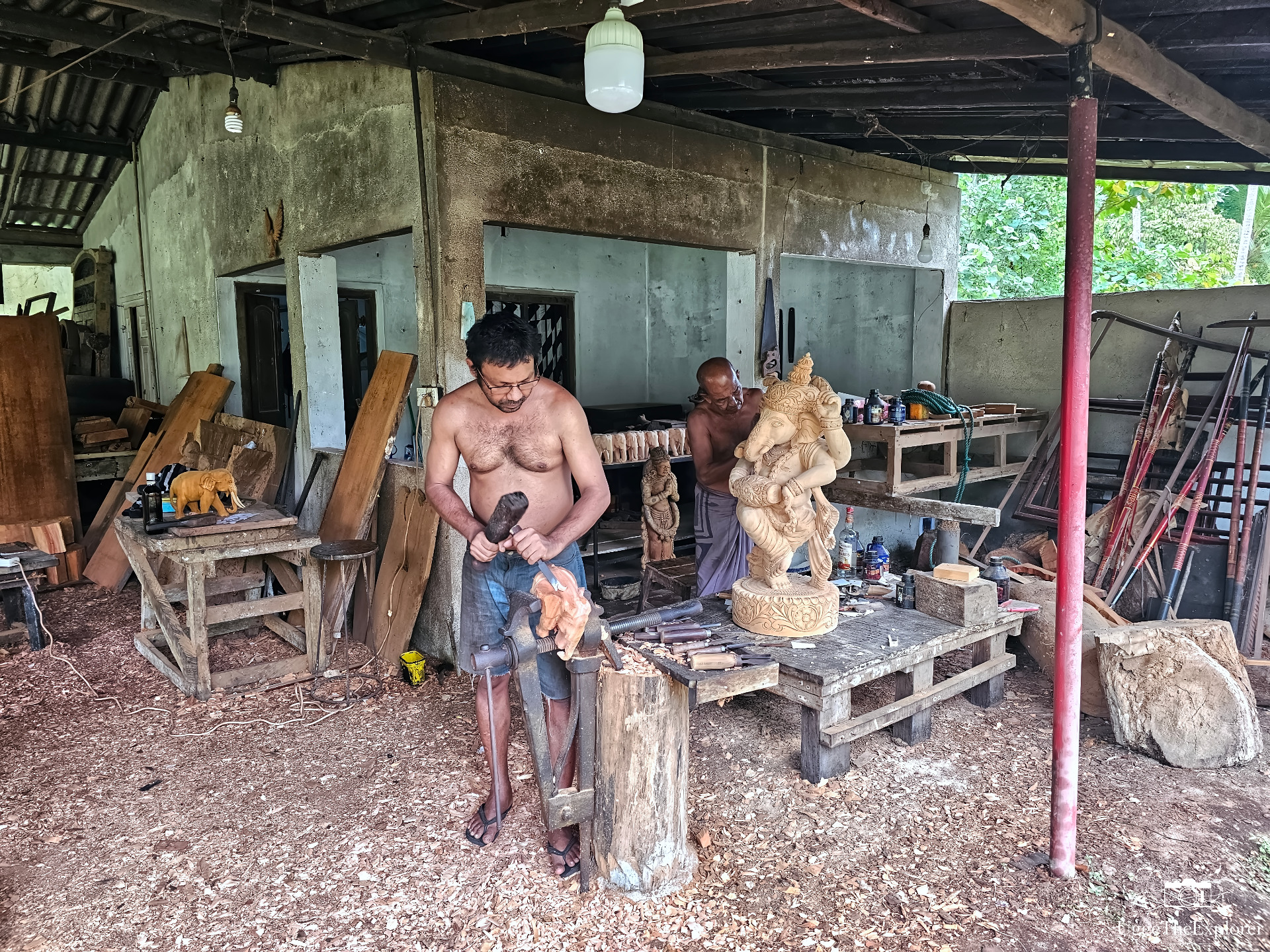Sri Lanka: Mask Magic and Masterful Woodcarving in Bentota

After the slightly over-the-top dramatic day I had yesterday—with leeches, slippery slopes, and jungle chaos—I had already decided that today would be a calm one. A proper slow day. No alarms, no adrenaline. Just me, a bit of culture, and ideally no blood loss.
With that in mind, I started looking into where I could buy an authentic Sri Lankan mask to bring home—not a mass-produced fridge magnet version, but a real one. A piece of art, with meaning, tradition, and that special aura only handcrafted things carry.

That search led me to a true hidden gem: Sunflower Arts & Crafts,
tucked away just off the main road outside Bentota, away from the
typical rows of souvenir shops. My driver knew it well and immediately
gave his stamp of approval. "Best place for masks, Sir," he nodded
confidently. And he was right.

As I arrived, I was warmly welcomed by the owner, who personally showed me around the workshop. Here, local artisans were working quietly and meticulously on intricate wood carvings—some of them enormous, weighing several hundred kilos. Each piece is carved from a single block of wood, carefully selected based on where in the world it will be shipped to. Certain types of timber are more resistant to cracks depending on the climate, so a Buddha destined for Europe might be made from different wood than one going to Australia. That level of detail and care is impressive, and honestly a bit humbling.

Then came the main event—the mask gallery. I was given a crash course in the meaning and history behind Sri Lanka's traditional masks, and wow, there's a lot more depth to it than I expected.
A bit of background: Why masks?
Masks have been a part of Sri Lankan culture for centuries, especially in the southern regions. They're traditionally used in:
-
Kolam dance drama – a form of folk theatre with comedic and satirical stories featuring exaggerated mask characters, often poking fun at village life, the elite, or human flaws.
-
Sanni Yakuma rituals – healing ceremonies where specific demon masks (called sanni) are used to drive out ailments like fever, paralysis, or even "insanity"—each illness has its own mask. A sort of spiritual prescription, you might say.
-
Raksha masks – colorful, fierce demon masks used in processions and performances to ward off evil spirits. These are the most popular with collectors due to their vivid designs and dynamic features.

I chose to take home a Dwi Naga Raksha—a double cobra demon mask. The cobras represent protection and power, and the mask is said to guard against negativity while bringing strength and transformation. Each mask is carved from soft Kaduru wood and painted by hand using natural dyes made from minerals, plants, and bark. Nothing synthetic here—just tradition, skill, and soul.
Along the way, I picked up a few more gifts too—but let's keep those a surprise for the lucky recipients.

After the mask gallery, the owner guided me through the rest of the showroom. It was filled with Buddha statues, Hindu deities, elephants, lions, and even more mythical creatures. The artistry was stunning. Every piece had a personality—some fierce, some serene, some joyful. It was impossible not to admire the craftsmanship.
Fun fact: In Sri Lanka, woodcarving isn't just a craft—it's considered an ancient art passed down through generations, especially in coastal towns like Ambalangoda, which is known as the cradle of mask-making. Families often specialize in this craft for centuries, preserving techniques that date back to when these masks were used in village healing ceremonies and rituals believed to restore balance between humans and the spiritual world.

When I finally walked out, carefully carrying my Dwi Naga Raksha wrapped in brown paper, I felt something I hadn't in a while—calm. No chaos. No near-death experiences. Just peace and appreciation for the beauty of human hands and heritage. If you're looking to bring home an exclusive souvenir from your trip to Sri Lanka—something truly unique and made with heart—this is definitely the place to go. Highly recommended!
And perhaps most surprisingly: I didn't bleed once today. That's progress!
But this peace was short-lived. Because tomorrow... it's back to the wild. Yet another middle-of-the-night wake-up awaits me as I head off toward Yala National Park, one of the most famous wildlife sanctuaries in Sri Lanka. Fingers crossed for leopards, elephants—and hopefully, not another leech encounter!
